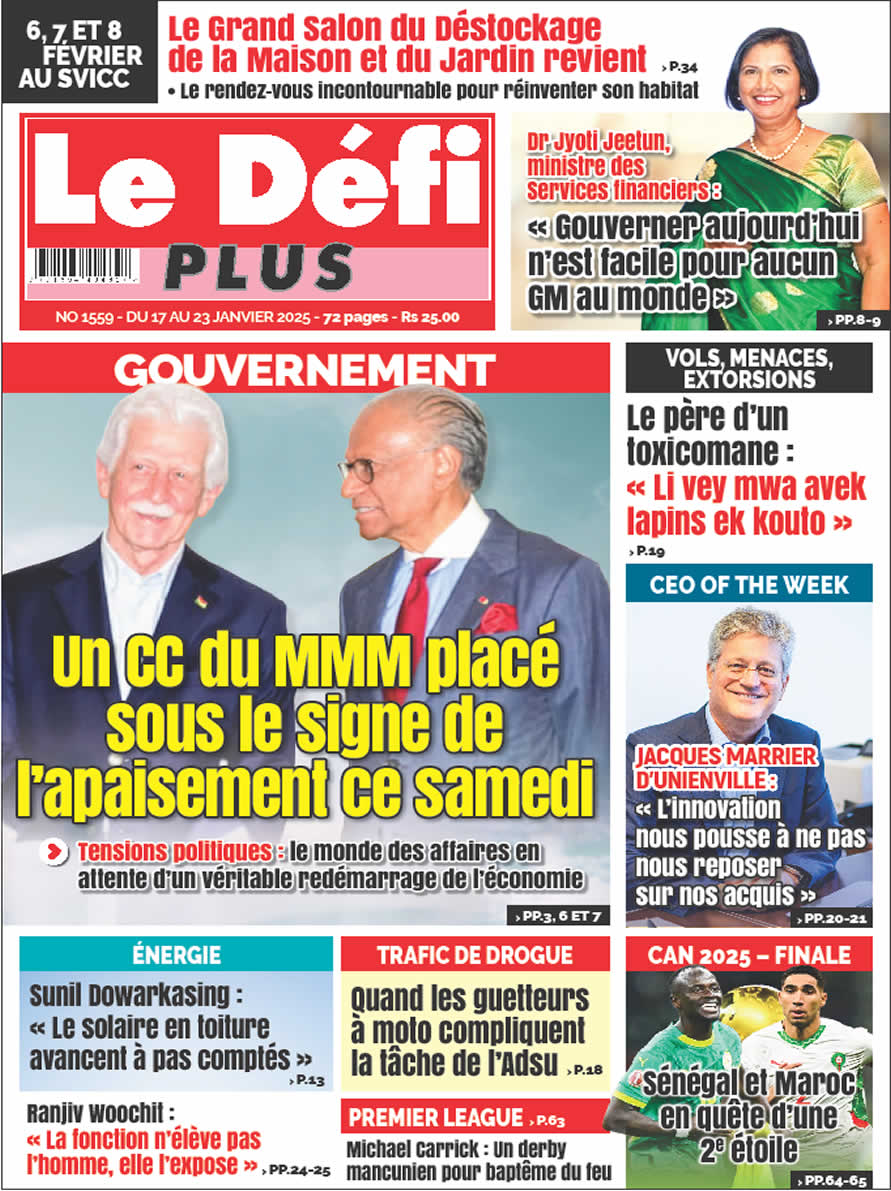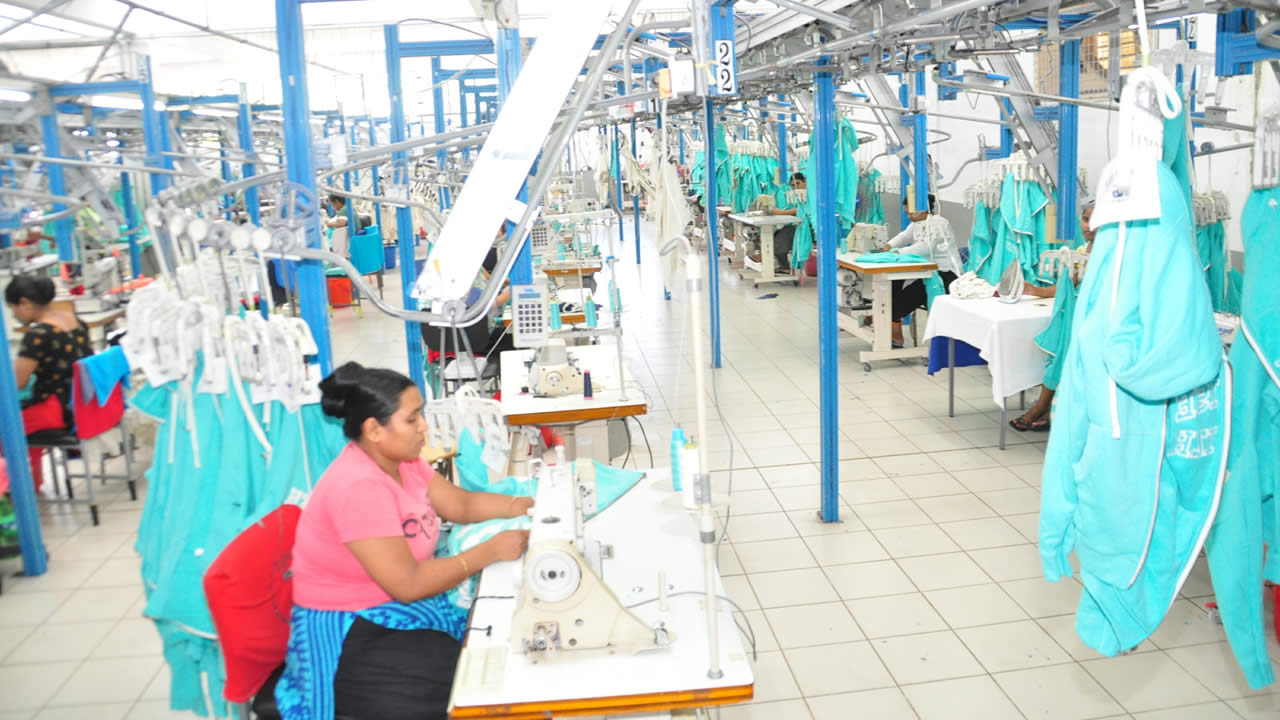
A recent statement from CMT (Compagnie Mauricienne de Textile) and the situation at Palmar Ltée has created an upheaval. While Palmar Ltée has gone under receivership, the direction of CMT announced that it is looking at the possibility of relocating part of its operation towards Mozambique, meaning the elimination of 5,000 jobs. Loss of jobs, cry of despair and economic burden are on the agenda. Is our textile industry on the verge of a big crisis?
The textile and clothing industry has been since decades an engine of economic growth but over the past few years, this industry is facing a crisis. The director of CMT, Francois Woo, recently highlighted the difficulties the Mauritian textile is facing and his willingness to relocate to Mozambique. Nevertheless, this is not the first time CMT has spoken about this plan of his. In 2015, the director had pointed out that they did not agree with the government policy of not renewing the permit of foreign workers and this created a turmoil back then. Added to this came the news of Palmar Ltée going on receivership. Workers are totally confused about the situation.
Over time, the textile industry benefited much from the Government. For instance, 98 companies have benefitted from the Speed-to-Market Scheme (STMS), resulting in an increase of 9% in exports by air to Europe and 20 companies have benefitted from the Exchange Rate Support Scheme (ERSS), which was set up in September 2017 to cushion the decline in the revenue of the manufacturing Export-Oriented Enterprises due to the sharp depreciation of the US Dollar. Without forgetting the Stimulus package as well. Despite this, how come our textile industry is plunging downwards? Experts in the field shed light on this issue.
Statistics
Statistics demonstrate that the contribution of the manufacturing sector to the Gross Domestic Product (GDP) is declining. The figure fell down from 14.7% in 2015 to 13.1% in 2018. The contribution of the textile segment, meanwhile, also declined from 4.6% to 3.7% during the same period. In 2016, total exports of the textile sector amounted to about Rs 27 billion, compared to Rs 29.4 billion the previous year. Total employment in the sector was around 47,100 in 2016, compared to around 48,600 in 2015.
Why is the sector declining?
There exist various reasons pointed out by different stakeholders to show why our textile is suffering. These include the following:
Cost of sales is too high
According to Antish Bhowaneedin, Director of Fairy Textiles, with the application of minimum wage and increase in price in general, the products have become more expensive and buyers don’t want to hear about increase in price. “Even when convincing them to stay, and we would work on break even or low margin, they say that they don’t want to work with a factory that will go bankrupt in the future. They have other alternatives in Africa where labour cost is low. Government is providing facilities to manufacturers, which make their price more competitive and attractive.”
Lack of government support
The lack of government support is pointed out by Antish Bhowaneedin. “Government should try to separate this labour law where minimum wage was a shot to textile industries. We need to be fair, expats money is being exported to their country. Minimum wage was applied in order that the standard of living of Mauritians becomes better, and this will be feasible only if that increase in salary is being injected in the Mauritian Economy. But here, what we see is that this is repatriated to the country of origin of the expats. Added to it is the increase in price of raw materials globally.”
Labour shortage
Another main issue is labour shortage. Antish Bhowaneedin reveals that in the past, only machinists and helpers were scarce and this was where we were employing expatriates, but nowadays, production managers, supervisors, pattern makers, floor managers, store keepers, drivers, managers, merchandisers for textile sector are scarce. Either people do not want to work in the textile field, fearing that it is unstable or they don’t want to take responsibility or it is not available. Now our labour law states that we are allowed to import only machinists. We believe that this should be reviewed and we should be allowed to employ other types of workers as well.”
Long procedure
The director of Fairy Textile decries the long procedure of work permit application. “We have a huge problem when we apply for work permit of the expatriates. It takes more than eight to ten months. Selected expatriates get fed up of waiting and they find other jobs, so we are left with no worker available and we have to restart the application, which gives us another 8-10 months’ waiting period. Besides, we can’t sustain delivery dates committed with customers and either we get huge claims or customers go away.”
| SITC Section/Description | 2016 Rs (Million) | 2017 Rs (Million) | Jan-Sep 2017 Rs (Million) | Jan-Sep 2018 Rs (Million) | % Change Jan-Sept 2018 v/s Jan-Sept 2017 |
| Total EOE Exports | 44,422 | 43,027 | 32,198 | 32,832 | 1.97 |
| Textile yarn, fabrics, made up articles | 2,897 | 3,210 | 2,403 | 2,453 | 2.08 |
| Articles of apparel and clothing | 21,387 | 19,646 | 14,657 | 14,904 | 1.69 |
| Total - Textiles & Apparel | 24,284 | 22,856 | 17,060 | 17,357 | 1.74 |

The burden on the economy
Economist Pierre Dinan asserts that with the decline of the textile industry, the commercial balance will be impacted. “Our textile sector mostly concentrates on export. If this sector is affected, this will result in less export. On the other hand, we will keep on importing. So, the balance of import and export will be affected. For the time being, we have a good reserve but if we start exporting less, it will have a negative impact on our reserve. We are already facing deficits and this will continue to accentuate.”
Another consequence will be unemployment. “The textile industry absorbs a maximum of employees, especially women. We are already facing the issue of unemployment among young people and now if this situation persists, many women will find themselves without any job. This can have a major impact on our economy.”
| Contribution in GDP | ||||
| Contribution in GDP (%) | 2015 | 2016 | 2017 | 2018 |
| Manufacturier | 14,7 | 14,0 | 13,4 | 13,1 |
| Textile | 4,6 | 4,1 | 3,9 | 3,7 |
| Annual Growth | ||||
| Sector Growth | 2015 | 2016 | 2017 | 2018 |
| Manufacturer | +0,1 | +0,3 | +1,5 | +0,8 |
| Textile | -2,8 | -5,8 | -0,7 | -6,2 |
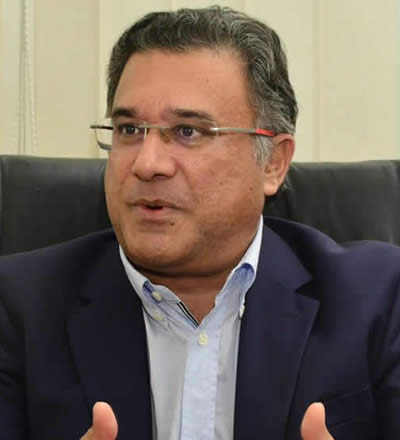
Relocation: The most preferred
Factories are finding it easier to relocate in order to become competitive. Many factors have been deplored for relocation such as shortage of manpower, costs of operations. Along with the big firms, small SMEs in the sector are willing to relocate to countries like Reunion, Mayotte, Martinique Maldives, United Arab Emirates, US or even Europe.
Ahmed Parkar, director of Star Knitwear, avers that the textile industry is indeed in a transition and many are looking forward to relocating in countries like Madagascar, India or Bangladesh. One main reason advanced by him is labour. “Bringing labour here is costly. Per month for one expat, you need around Rs 18,000 minimum, as there are fees associated with them. So, it comes easier for the companies to relocate in places where there is easy access of labour. Besides, in Mauritius, there is less interest in the textile industry and less skills available as well.”
He further elaborates that the operation cost has increased and it has become difficult to have full integration. “In other countries, they believe in specialization and different firms manufacture different products. So, it becomes easier to sustain and survive.”
 François de Grivel: “There is a future in textile industry”
François de Grivel: “There is a future in textile industry”
Former President of MEXA, François de Grivel reveals on Radio Plus on Monday that in general, the situation is worrying but we still have a good future in textile industry. “We do get orders but we need to respect delivery deadlines as well. For this we need operators. Most of the employees in this sector come from Bangladesh, India or Madagascar. Mauritians need to be aware of the importance of this sector.”
Commenting on the minimum salary, he said that “there has been a stability. In countries like China, salaries are increasing and same for Bangladesh. But many Bangladeshis prefer to come to Mauritius. So, we can say that the sector has its purpose. Now, companies have the responsibility to pay the minimum salary and add a prime for performance as well. All depends on the companies.”
When asked whether we are heading towards a second crisis after that of 2000, he replied, “If there are no sufficient orders, we will experience difficulties. The promotion of exportation is dynamic. The EDB is doing the necessary to increase orders. If we are making value-added product and high-end products, we can boost this sector again. We are never safe from the sales reduction and closing of factories.”
Maxime Koon: “It is becoming very difficult to compete with Asian countries”
President of the Textile Apparels Manufacturers’ Association, Maxime Koon explains that since three years now, the situation has been declining and nothing concrete has been done to alleviate the problem. “There are around 300 SMEs in this sector and they are all suffering. Some have already closed their doors, while others are operating at a loss. It is becoming very difficult to compete with Asian countries.”
One of the reasons, according to him, for this decline is operating cost. “With time, the cost of operation has incredibly increased. Shortage of labour has compelled the importation of expats which has a cost. Raw materials are imported as well. With all these costs on the rise, the factories are finding it difficult to cope and it is impossible for them to increase the price as well.”
He also blames the minimum salary for creating more trouble. “It is impossible for companies in the textile sector to abide by the minimum salary. It has added an additional burden on us.” He states that big companies are relocating as they have the capital to do so but there are also other small firms which cannot adopt this strategy and will eventually prefer close down.”
CMT: Relocation is being considered
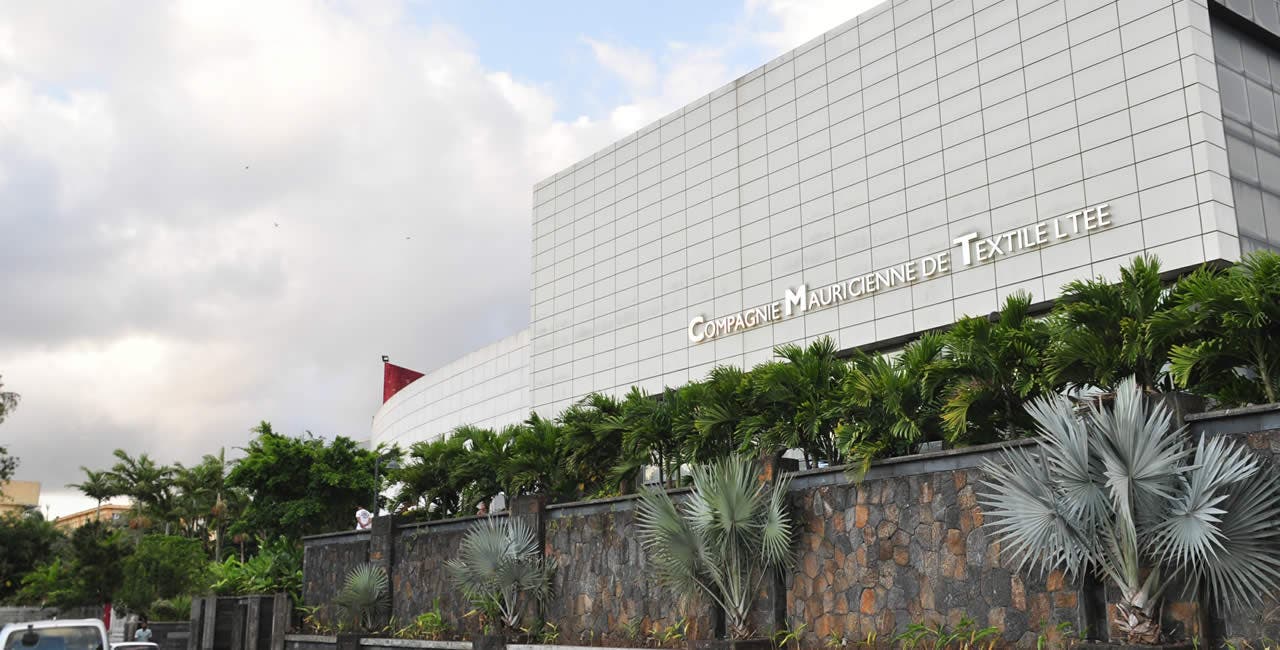
Compagnie Mauricienne de Textile Ltée (CMT) is considered to be a global jersey-wear apparel industry leader which has its headquarters in Mauritius with marketing offices in UK, France and soon opening in New York. Besides, CMT is already present in Madagascar and Bangladesh. According to statistics, since 2016, the number of employees is decreasing. For instance, in 2016, the number of employees were 7,828 among which 4,583 were expats. The number has decreased to 5,976 among which 3,461 are expats. Concerning the financial status of the company, it is seen that pre-tax profits drop drastically from Rs 712 million in 2016 to Rs 196 million in 2017, despite a slight increase in turnover, which was around Rs 6 billion in 2017.

Palmar Ltée: Confusion and desolation decry
Palmar Ltée, based in Rivière du Rempart, employs approximately 1,300 people, 904 Mauritians and 356 expats. The company established since 1980 has an annual production capacity of 2.6 million pieces. It exports mainly to Europe, the United States and South Africa. It specializes in the design and production of jerseys and jeans. Its operations include various tasks such as dyeing and finishing, cutting and sewing, printing, embroidery and other embellishments, washing and dyeing of garments, quality control, packaging and storage of finished products. The annual output of the factory is 1,8 million jeans and 4, 2 million jerseys. 55% of manufactured products are for men, 35% for women and 10% for children. According to the financial statement, on December 21st, 2018, Palmar Ltd. made a profit of Rs 11,370,009.
Since 7th February, it is Yacoob Ramtoola and Afsar Ebrahim who are now Joint Receiver and Manager of the company. The company has debts of Rs 600 million and is placed under administration since 7th February.
Following this situation, the workers are at a loss. They cannot understand how a company that has been making profits finds itself in such a situation. One of the employees who has several years of experience, Romesh argues that he fails to understand how a company that has performed well in December last year has declared bankruptcy at the start of this year. Another employee, who has been with this firm since more than 10 years, wonders if a new buyer takes over, how the situation will be and if ever their years of loyal services will be counted. “We have been giving our best all these years and now seeing all crushed under our eyes is painful. We do not know how we will manage. We have families and other responsibilities.”
Ramen also does not understand how the factory that manufactured 500,000 pieces and exported during the months of November and December, last year, may go bankrupt in January 2019. “I wonder if it’s because of the minimum salary or the salary compensation of Rs 400 this year that may lead to the closure of the plant,” he says. The latter does not know how he will manage to feed his family and honor his debts, if the factory closes its doors because his wife is also working in this same factory. Sunita and her colleagues are unaware if they will receive their time of service if there is a buyer. “If we are allocated the same conditions, then we can work. But we will recruit again, so we must have our time of service because some have worked since the creation of the plant 35 years ago. Now we do not know what to do if we are redeployed to another factory in another region. Adaptation will be difficult,” she says.
At the Flacq Unit, the same situation prevails. The employees were asked to stay at home for a week and later, they resumed work. Still, instead of ending work at 17:00, they are going home by 14:00. The employees are confused but at the same worried about their situation. “We are not being informed clearly where we are heading. It is also the second time that employees are getting their salary in time. There are many employees who are experiencing difficulties and they cannot afford to lose their jobs. The situation is deplorable.”
Strategic plans by Government and EDB
In its Three-Year Strategic Plan 2018-2021, the Government has identified the following strategies for the manufacturing sector:
- Develop high-end, precision driven and technology-enabled industries
- Invest in new equipment and technology, improve their export preparedness, and enhance their marketing and promotion campaigns
- Enhance capacity development in creativity and design
- Penetrate niche markets through higher quality exports
- Increase competitiveness through brand identity
On the other hand, in order to enable local entrepreneurs to tap into unexplored markets, the Economic Development Board has embarked on a mission to increase the country’s visibility in terms of its economic potential and know-how by participating more in international fairs, exhibitions and roadshows. In line with its objective to increase its visibility in Northern America and foster market diversification, the Economic Development Board participated in Texworld New York, a world-renowned fabrics and apparel sourcing event, from the 21st to the 23rd of January 2019. Economic Development Board representatives attended the event after a four-year lapse along with a delegation of nine Mauritian textile & apparel operators.
The exhibition was relevant to medium-size companies that have met with new buyers who are considering sourcing from Mauritius. Orders in negotiation with these companies totaled Rs 22 million. Fairy Textile and Fairy Shirts made a significant breakthrough with confirmed orders for both shirts, denims and trousers amounting to nearly Rs 30 million. EDB will pursue its efforts to capture the North American market through regular participation at international fairs and workshops.
 Eric Dorchies: “We made the very early choice to diversify our production”
Eric Dorchies: “We made the very early choice to diversify our production”
Chief Operating Officer of CIEL Textile, Eric Dorchies explains that the textile industry is a cyclical industry and it is a fact that the current global market is difficult, as there is a strong fluctuation in demand in Europe and increased competition from the main producing countries, such as China or Bangladesh, as well as competitors, relatively new, such as Turkey, which benefits from its geographical proximity to traditional markets. “At CIEL Textile, we made the very early choice to diversify our production areas between our regional historical places (Mauritius and Madagascar) and South Asia (India and Bangladesh). Today, we have 19 factories spread over these four countries. This strategy as well as the investments we have made in our operations, design, quality and automation allow us, today, to be considered by our customers as trusted partners and not just producers.”
According to the COO, our economic health therefore depends on our ability to adapt to react quickly and remain competitive. “We invest in digitalization, automation, sustainable development and of course in the training of our teams. We must also deal with external factors (labor costs, tariffs, freight, exchange rates, etc.) and we must continue the constant dialogue with the authorities and the Government in order to preserve our competitiveness against the Asian giants.”
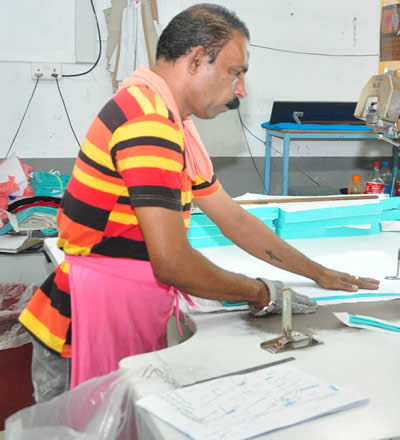 Revamping the industry
Revamping the industry
For the economist Pierre Dinan, there are several problems and it is high time to address them in the textile industry. “Firstly, we need to ask how far our textile industry has evolved. Do we have an industry modern enough to compete at an international level? Time has come for our stakeholders to see how they can rebrand our products, giving them a Mauritian touch. Innovation and creativity are needed to give a boost to this sector.”
For Ahmed Parkar, the Government must concentrate on protecting our local companies and encourage them to come forward with value-added products. “The future is tough but not despairing. There is a long term restructuring to be done. Like it has been done with the Sugarcane Industry, which has been transformed into the Cane Industry. We need a Marshal Plan for the textile industry as well.”
He further adds, “The rapid changes taking place in the world of retail, such as the strong growth of e-commerce, fast fashion or responsible products, leave us no respite and invite us to constantly evolve to follow the trends and stay in the game.”







